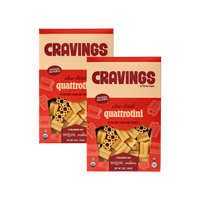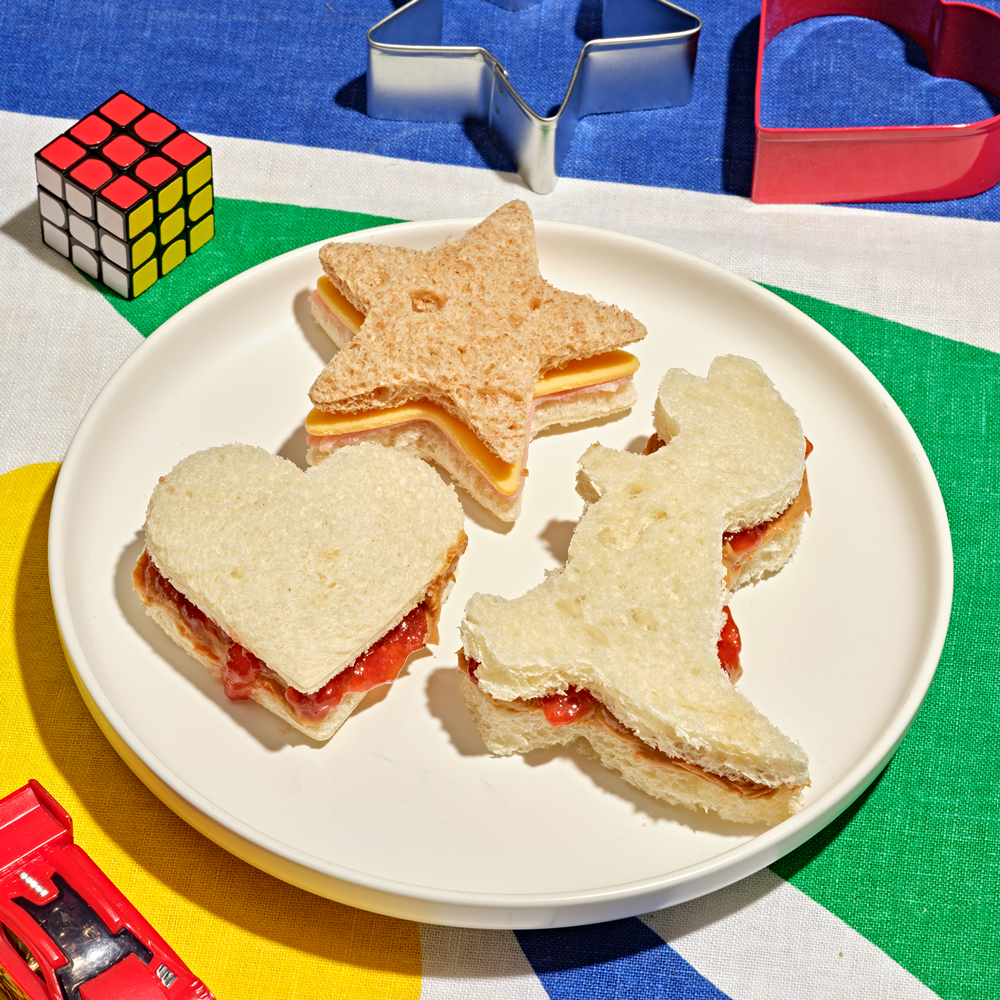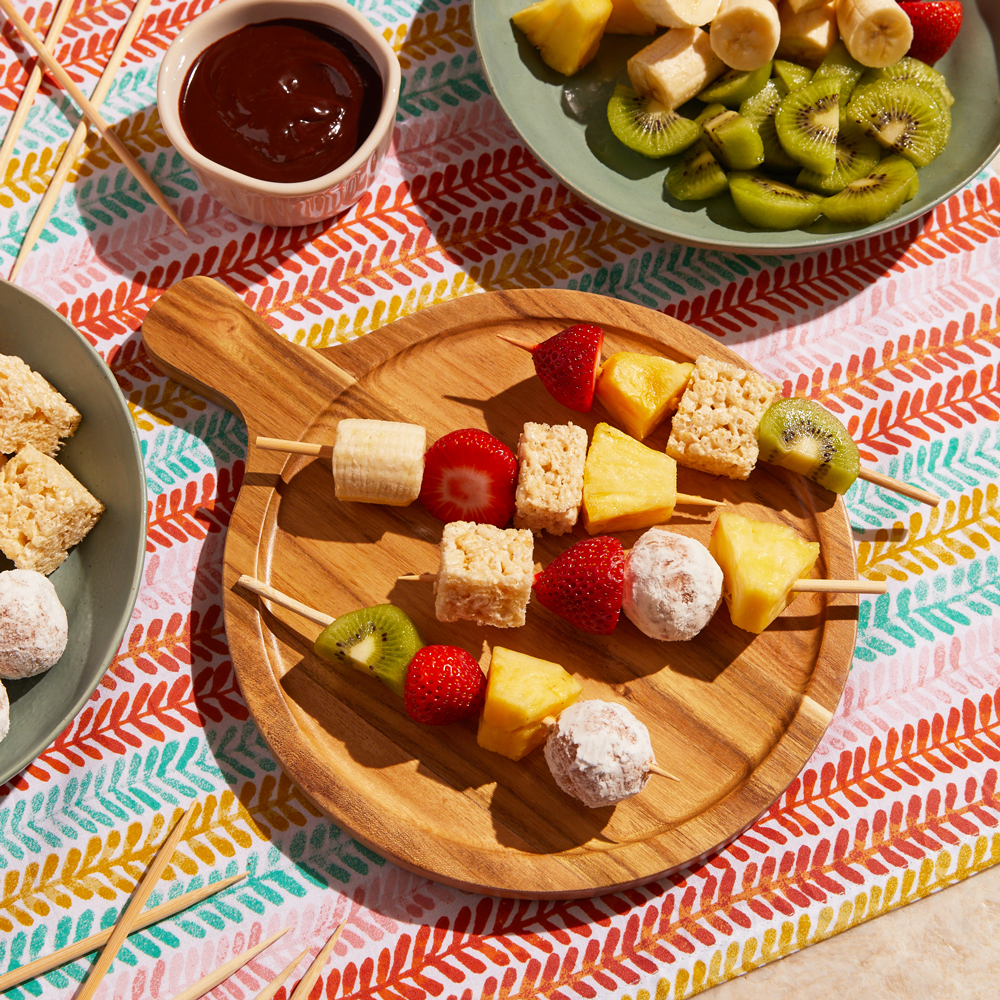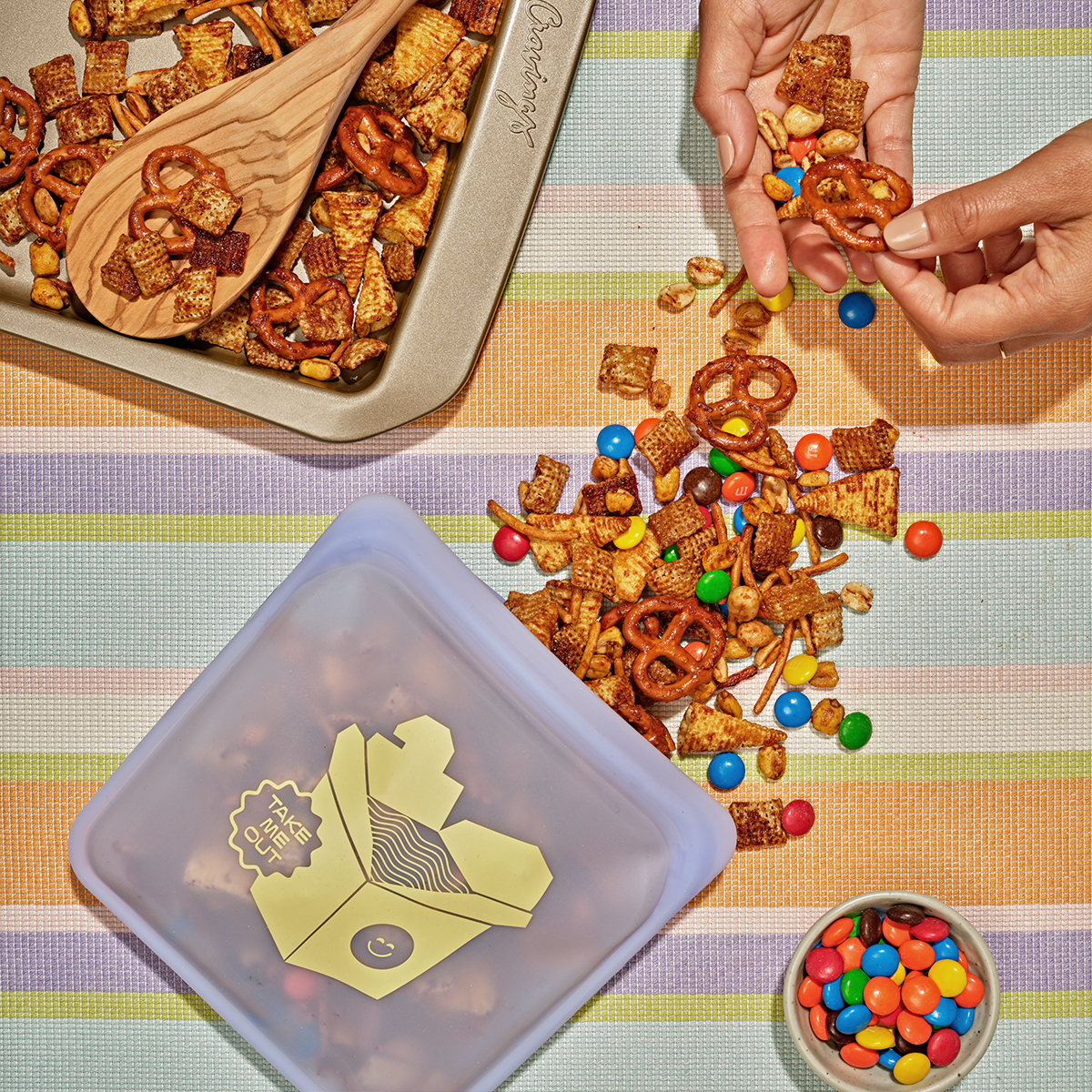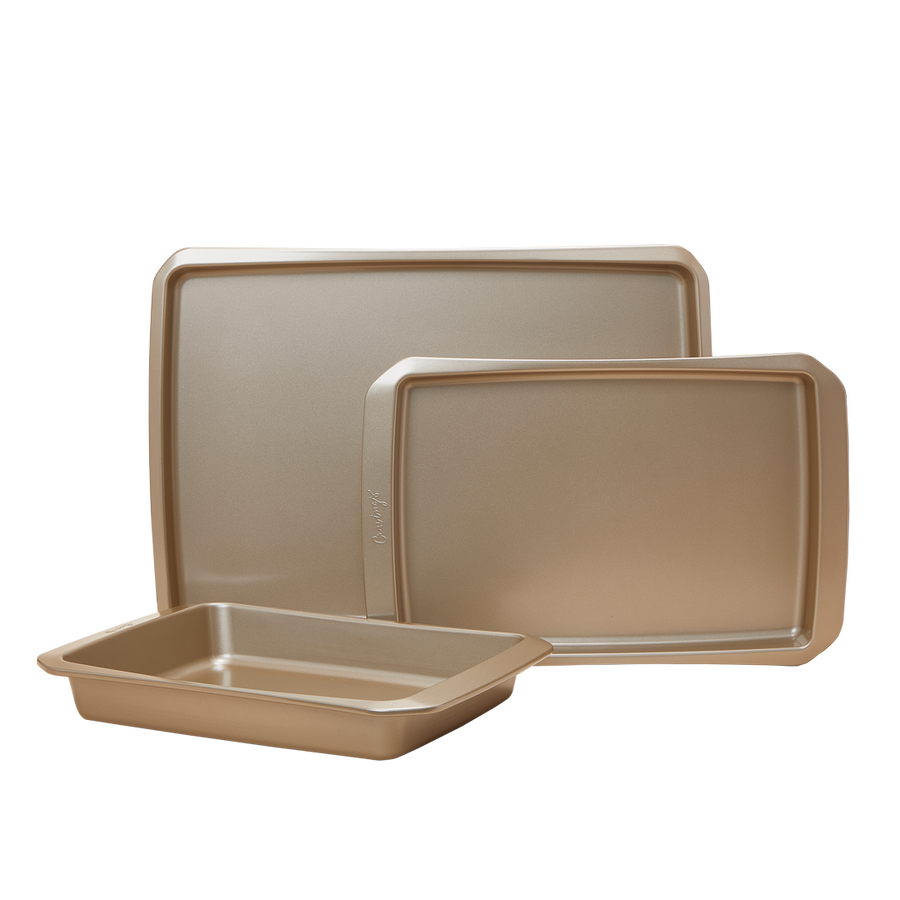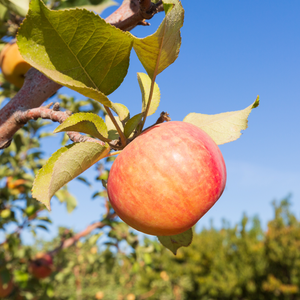Mealtime can be stressful if you have picky kiddos at home. Miles' and Luna’s food journeys have been fullll of ups and downs, so Chrissy has learned a few hacks along the way to get her little food critics on board for all kinds of new flavors. But if you’ve tried Luna’s Lunch Menu at home and your kids still won’t touch fruit, vegetables, or even a PB&J, we’ve got some new tips and tricks up our sleeves to get them excited to eat and even help you cook.
We tapped Erica Domesek—founder of P.S. I Made This, one of our fave DIYers on Instagram, and mom of a picky eater—for her easy ideas to make food more fun and exciting for kids. Follow along and they’ll hopefully be on their way to trying anything and everything you put in front of them.
1. Make meals a game with storytime
Before eating, share what’s on the plate—and what kind of dinosaur would eat it. A T-Rex is a meat-eating carnivore and loves burgers and chicken, but a Triceratops would love these broccoli trees because they’re veggie-loving herbivores! This storytelling can help kids understand the food they’re eating, and they can ask for the Stegosaurus menu next week.
2. Shake up your shapes!
Kids eat with their eyes, so make everything you possibly can into a fun shape. Cookie cutters are great for sandwiches, as seen above with ham & cheese and PB&J. You can also try shaping naan pizzas (store-bought or homemade!) into bunny faces, cats, dogs, or whatever shape your own DIY art skills can pull off.
3. Encourage playing with your food
Kids will be more excited about food if they’re involved in the process. Let them assist with prep by cracking eggs, making spaghetti squash or zoodles, rolling meatballs, or helping start-to-finish for giant sheet pan pancakes!
Here’s how to make ‘em: Pour a few cups of prepared pancake batter onto a greased sheet pan and let the kids go wild with a mix of healthy options (blueberries, sliced bananas, strawberries, and peaches) and treats (sprinkles and chocolate chips). Bake at 400°F for 15–20 minutes until cooked through, and then broil at the end until it’s nice and brown. Cut into pieces and the kids can eat mix-and-match pancakes for breakfast or brinner. This is also way faster than flipping a dozen pancakes on the stove!
4. Serve “ice cream” for breakfast
Pack fruits and hidden veggies (like spinach, which won’t impact the flavor too much) into smoothies and freeze in animal-shaped molds to let your kids have “ice cream" for breakfast. They’ll mostly taste the sweet fruit but get in lots of nutrients early in the day.
5. Put ANY food on sticks!
It’s not just popsicles that go on sticks. Use toothpicks, coffee stirrers, and skewers to make any food seem more enticing—and super portable. Fruit skewers are a simple go-to, or you could cook up meats and veggies together, or alternate cold cuts and cheese for a kid-friendly take on charcuterie.
6. Treat your blender like your best friend
Don’t try to put vegetables on top of food where they can see them, like broccoli on pizza—sneak the veggies in by blending boiled carrots and onions into tomato sauce to fortify with extra nutrients, or add finely chopped veggies into meat for taco night. Just don’t drastically change the color so they can’t spot the difference and say “no” before they even try a bite.
7. Let kids make their own choices
If playing restaurant at home is too much to take on, try just putting a few pasta shapes in bowls to let them pick which noodle they want for dinner. You can also try putting cereals and milk in separate bowls for them to assemble their own breakfast, or let them decide what to put in the snack mix.
8. Turn anything into a french fry
Almost any veggie can be french fried in the air fryer. Make zucchini sticks with Parmesan cheese, go for a mix of sweet potatoes and carrots for a sweet crinkle fry, or turn cauliflower into tater tots.
9. Shrink things down
When in doubt, make foods miniature. Bite-sized snacks like mini burger sliders, small tortillas for quesadillas, and lasagna made in muffin tins, will immediately make things more fun.



